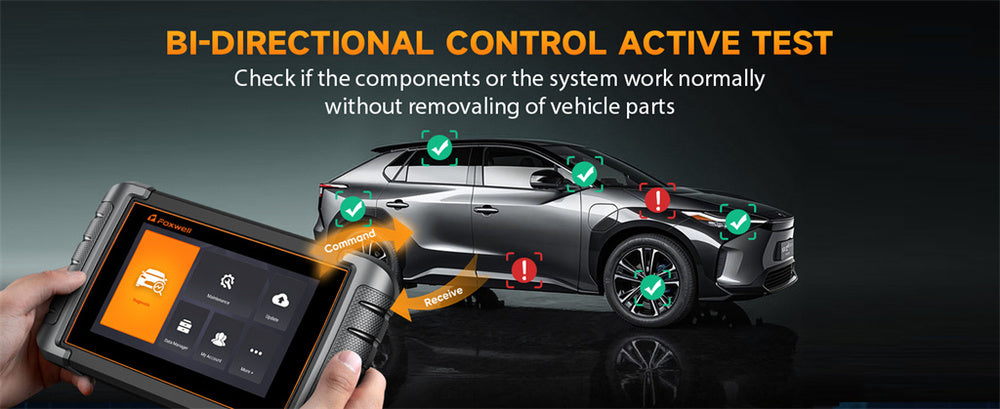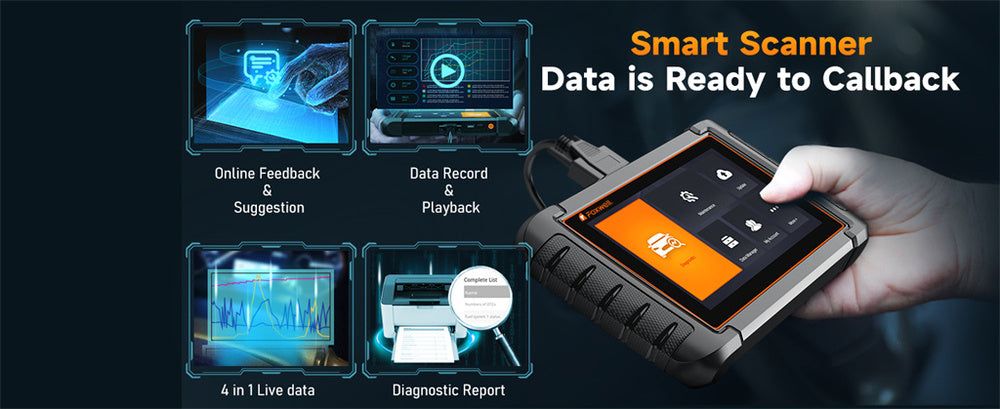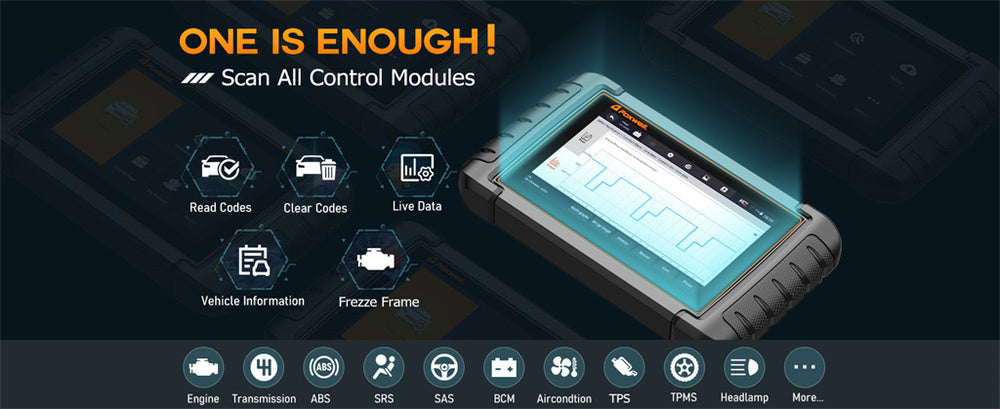We all know that an OBD2 scanner is handy when your car throws a check engine light. But did you know it can do more than just check engine codes?
For instance, it can sometimes help you figure out the steering wheel angle, which is crucial for features like Electronic Stability Control (ESC) and Advanced Driver Assistance Systems (ADAS).
Let’s break down how you can access this data, what tools you’ll need, and what to expect.
Steering Angle Sensor (SAS) and Its Role

First off, let’s talk about the Steering Angle Sensor (SAS). Imagine it as your car’s way of keeping track of how much you’ve turned the wheel.
It’s a sensor hidden in the steering column that constantly measures the angle and speed at which you're steering.
This data gets sent to systems like ESC, which steps in when your car’s losing traction, or ABS, which adjusts braking to help you stop safely.
Without the SAS, your car wouldn’t know how much you're turning the wheel, making it harder to keep things stable in tricky driving situations.
Can OBD-II Access Steering Wheel Angle?
Here’s where things get interesting. Can your OBD-II scanner get to this data? The answer: sometimes, but not always.
OBD-II systems were originally designed for engine diagnostics and emissions data. It’s like a one-stop shop for engine health.
However, some manufacturers have made it so that other data—like steering angle—can also be accessed through the OBD-II port.
This depends on how the car’s Electronic Control Units (ECUs) communicate. If the SAS data is shared across the same system as the engine data, then, with the right tools, you can pull it.
Think of it as checking different rooms in a house—if the wiring’s set up right, you can access more than just the engine data; you might be able to peek into the steering angle too.
But in many cars, that steering angle data is on a different system, making it hard to reach with a basic OBD-II scanner.
How to Access Steering Wheel Angle Data Through OBD-II
Standard OBD-II Scanners
Most basic OBD-II scanners are like a simple tool set—good for checking engine trouble, but not equipped for more advanced jobs.
If you’re using a basic scanner, don’t expect to see steering angle data pop up. It just doesn’t have the power to dig that deep.
Enhanced OBD-II Scanners
Now, if you want to go beyond the basics, you’ll need an enhanced OBD-II scanner. A great example is the Foxwell GT60. Here’s why it’s a good fit:
- Manufacturer-Specific Access: Unlike regular scanners, the Foxwell GT60 can access specific data from the manufacturer.
This means it can pull data that basic scanners can’t, including the steering angle from the SAS. It’s like upgrading from a hammer to a full toolbox—you’ve got what you need to tackle bigger, more complex jobs.
- Covers Many Car Brands: The GT60 works across multiple makes and models. So, whether you're driving a European, American, or Asian car, this tool can likely pull steering angle data if the vehicle supports it.
- Advanced Diagnostics: The GT60 not only reads the steering angle but also helps recalibrate it after repairs or adjustments.
It’s essential if you’ve been working on systems like ESC, ensuring everything is back in sync.
In short, the Foxwell GT60 gives you the ability to get into those harder-to-reach parts of the car’s system, making it a great tool for pros or serious DIYers.
Accessing the CAN Bus
For those who like to dig even deeper, you can access the CAN bus, which is basically the nervous system of your car.
The CAN bus connects all the sensors and control units in the vehicle.
With the right tools, you can tap into this network and retrieve steering angle data directly.
This is more advanced, but if you're comfortable with it, it’s like unlocking the back door to your car’s data.
Limitations of Accessing Steering Angle Data Across Different Vehicles
Not all cars are as open when it comes to sharing their steering angle data. There are a few reasons why you might hit a wall:
Proprietary Systems
Some manufacturers use proprietary systems to lock down sensitive data. The idea is to protect the vehicle’s most crucial systems—like steering—from being tampered with.
These systems are key to your car’s safety, so they’re often kept behind a "digital fence." Without the right scanner, you won’t be able to access them. It’s like trying to get into a locked room without the right key.
Older Vehicles
In older cars, you might not even have a Steering Angle Sensor. Before safety features like ESC became standard, there was no need for such data.
So, if you’re driving an older model, don’t be surprised if the system simply doesn’t exist.
Regional Differences
Vehicles sold in different regions can have different setups.
For example, a car sold in Europe might allow access to more data than the same model sold in North America.
This is due to varying regulations and manufacturer choices, so the availability of steering angle data can depend on where the car was sold.

Why Would You Need Steering Wheel Angle Data?
There are a few good reasons you’d want to get your hands on steering wheel angle data:
Vehicle Diagnostics and Repairs
If you’re working on your car’s ESC or ADAS, getting the steering angle data can help ensure the system is functioning properly.
A misaligned or faulty SAS can mess with these systems, so being able to check it is key to proper diagnostics and repairs.
Driving Behavior Analysis
For car enthusiasts or those into performance tuning, steering angle data can show how a car handles in different driving conditions.
It’s like having a window into how you’re driving, giving you the chance to fine-tune your technique or make adjustments to the car.
Aftermarket Modifications
If you’ve made upgrades or changes to your car’s steering system, it’s important to make sure the SAS is calibrated properly afterward.
Having access to the steering angle data ensures everything is aligned and working as it should, especially after installing performance parts or modifying the system.
Conclusion
To sum it up, while not all OBD-II scanners can access steering wheel angle data, it’s possible with the right tools.
Enhanced scanners like the Foxwell GT60 can dig deeper into the car’s system, allowing you to access and even recalibrate the Steering Angle Sensor.
However, it’s important to know that not all vehicles make this data available—some might be locked down, and others might simply be too old to have this kind of technology.
Whether you're a DIY mechanic or just a car enthusiast, understanding how to get steering wheel angle data can help with diagnostics, performance tuning, or ensuring your modifications are working properly.
With the right scanner and a bit of know-how, you’ll be able to unlock even more of your car’s hidden data.
FAQs
How do you check the steering system?
You can check the steering system using a professional OBD-II scanner that reads data from the Steering Angle Sensor (SAS). It helps you identify any misalignments or issues with the sensor and the related systems like Electronic Stability Control (ESC).
What scanner can calibrate a steering angle sensor?
A tool like the Foxwell GT60 can read and recalibrate the Steering Angle Sensor (SAS). It's designed for advanced diagnostics and ensures your steering systems are correctly aligned after repairs or adjustments.
What OBD2 scanner tells you everything that's wrong with your car?
Enhanced OBD-II scanners like the Foxwell GT60 offer in-depth diagnostics. They go beyond engine codes and can help detect issues in various systems, including steering, braking, and safety features.




Leave a comment
This site is protected by hCaptcha and the hCaptcha Privacy Policy and Terms of Service apply.